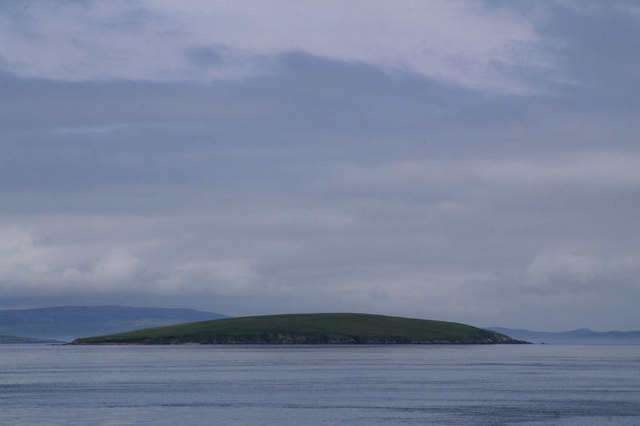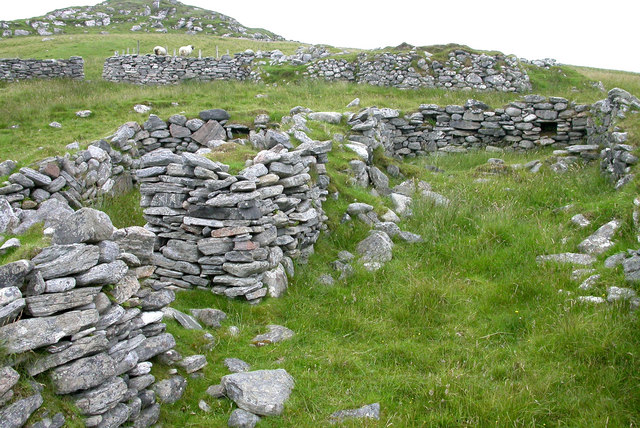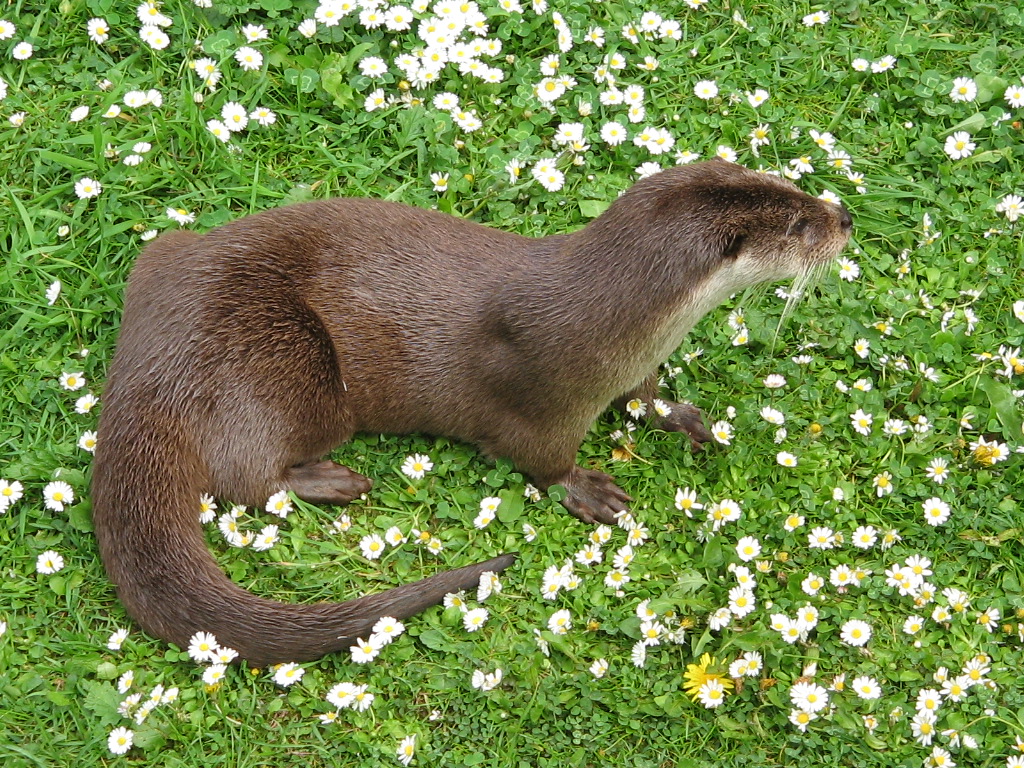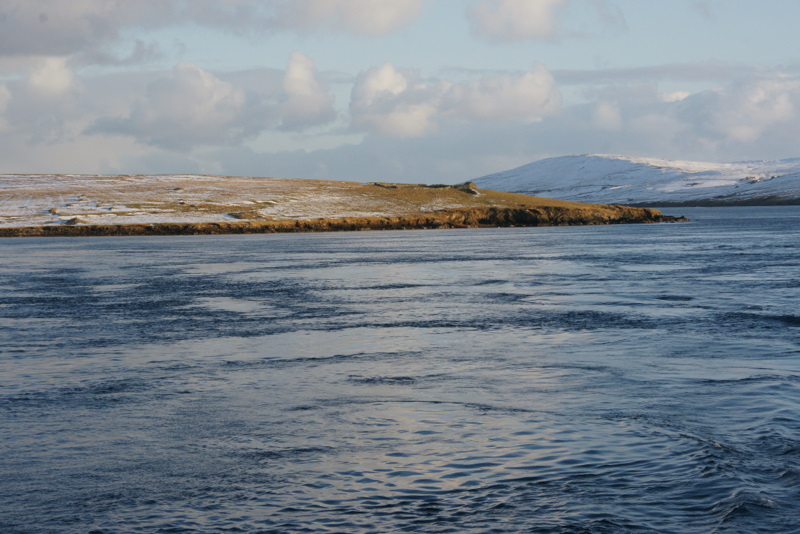|
Little Roe
Little Roe is an island in Yell Sound in the Shetland Islands History The island's name is Norse in origin, from , meaning "small red island" in contradistinction to Muckle Roe, which is ''not'' nearby, but in St Magnus Bay. In 1841, eleven people lived here, all in the same house.Haswell-Smith, Hamish. (2004) ''The Scottish Islands''. Edinburgh. Canongate. A light beacon has been built on the island. Geography and geology The island's name derives from its red granite. It is at , due east of the Northmavine at the entrance to Sullom Voe. Lamba is due north, and Uynarey, Brother Isle and Bigga between it and Yell Wildlife Otters occasionally visit here, and puffins and storm petrels also nest here. See also * List of islands of Scotland This is a list of islands of Scotland, the mainland of which is part of the island of Great Britain. Also included are various other related tables and lists. The definition of an offshore island used in this list is "land that is su ... [...More Info...] [...Related Items...] OR: [Wikipedia] [Google] [Baidu] |
Little Roe - Geograph
Little is a synonym for small size and may refer to: Arts and entertainment * ''Little'' (album), 1990 debut album of Vic Chesnutt * ''Little'' (film), 2019 American comedy film *The Littles, a series of children's novels by American author John Peterson ** ''The Littles'' (TV series), an American animated series based on the novels Places *Little, Kentucky, United States *Little, West Virginia, United States Other uses *Clan Little, a Scottish clan *Little (surname), an English surname *Little (automobile), an American automobile manufactured from 1912 to 1915 *Little, Brown and Company, an American publishing company * USS ''Little'', multiple United States Navy ships See also * * *Little Mountain (other) * Little River (other) *Little Island (other) Little Island can refer to: Geographical areas Australia * Little Island (South Australia) * Little Island (Tasmania) * Little Island (Western Australia) Canada * Little Island (Lake Kagawong), Ontario ... [...More Info...] [...Related Items...] OR: [Wikipedia] [Google] [Baidu] |
Uynarey
Uynarey is one of the Shetland islands in Yell Sound, just to the north of Bigga, and east of Brother Island. It is an RSPB reserve.Haswell-Smith, Hamish. (2004) The Scottish Islands. Edinburgh. Canongate. The name comes from the Norse for "venerated island", and this may reflect a Culdee connection. Geology and geography There is a small bay in the east - Haa Geo, and a cave in the west. The North end is called "the Niv". It is approximately long. The geology is moine gneiss and quartzite. It has steep sides, and is over tall. File:View over Uynarey - geograph.org.uk - 1744904.jpg, View over Uynarey looking across the islands of Uynarey and Brother Isle in Yell Sound towards Ronas Hill. File:North end of Uynarey - geograph.org.uk - 873714.jpg, North end of Uynarey File:South end of Uynarey - geograph.org.uk - 873710.jpg, :South end of Uynarey See also * List of islands of Scotland This is a list of islands of Scotland, the mainland of which is part of the island ... [...More Info...] [...Related Items...] OR: [Wikipedia] [Google] [Baidu] |
List Of Islands Of Scotland
This is a list of islands of Scotland, the mainland of which is part of the island of Great Britain. Also included are various other related tables and lists. The definition of an offshore island used in this list is "land that is surrounded by seawater on a daily basis, but not necessarily at all stages of the tide, excluding human devices such as bridges and causeways". Scotland has over 790 offshore islands, most of which are to be found in four main groups: Shetland, Orkney, and the Hebrides, sub-divided into the Inner Hebrides and Outer Hebrides. There are also clusters of islands in the Firth of Clyde, Firth of Forth, and Solway Firth, and numerous small islands within the many bodies of fresh water in Scotland including Loch Lomond and Loch Maree. The largest island is Lewis and Harris which extends to 2,179 square kilometres, and there are a further 200 islands which are greater than 40 hectares in area. Of the remainder, several such as Staffa and the Flannan ... [...More Info...] [...Related Items...] OR: [Wikipedia] [Google] [Baidu] |
Storm Petrel
Storm-petrel may refer to one of two bird families, both in the order Procellariiformes, once treated as the same family. The two families are: *Northern storm petrels (''Hydrobatidae'') are found in the Northern Hemisphere, although some species around the Equator dip into the south. * Southern storm-petrels (Oceanitidae) are found in all oceans, although only white-faced storm petrel The white-faced storm petrel (''Pelagodroma marina''), also known as white-faced petrel is a small seabird of the austral storm petrel family Oceanitidae. It is the only member of the monotypic genus ''Pelagodroma''. Description The white-face ... (breeding in the North Atlantic, in addition to the Southern Ocean) and Wilson's Storm-petrels (on migration) are found in the Northern Hemisphere. {{SIA Set index articles on animal common names ... [...More Info...] [...Related Items...] OR: [Wikipedia] [Google] [Baidu] |
Puffin
Puffins are any of three species of small alcids ( auks) in the bird genus ''Fratercula''. These are pelagic seabirds that feed primarily by diving in the water. They breed in large colonies on coastal cliffs or offshore islands, nesting in crevices among rocks or in burrows in the soil. Two species, the tufted puffin and horned puffin, are found in the North Pacific Ocean, while the Atlantic puffin is found in the North Atlantic Ocean. All puffin species have predominantly black or black and white plumage, a stocky build, and large beaks that get brightly colored during the breeding season. They shed the colorful outer parts of their bills after the breeding season, leaving a smaller and duller beak. Their short wings are adapted for swimming with a flying technique underwater. In the air, they beat their wings rapidly (up to 400 times per minute) in swift flight, often flying low over the ocean's surface. Etymology The English name "puffin" – puffed in the sense of s ... [...More Info...] [...Related Items...] OR: [Wikipedia] [Google] [Baidu] |
Otter
Otters are carnivorous mammals in the subfamily Lutrinae. The 13 extant otter species are all semiaquatic, aquatic, or marine, with diets based on fish and invertebrates. Lutrinae is a branch of the Mustelidae family, which also includes weasels, badgers, mink, and wolverines, among other animals. Etymology The word ''otter'' derives from the Old English word or . This, and cognate words in other Indo-European languages, ultimately stem from the Proto-Indo-European language root , which also gave rise to the English word "water". Terminology An otter's den is called a holt or couch. Male otters are called dogs or boars, females are called bitches or sows, and their offspring are called pups or cubs. The collective nouns for otters are bevy, family, lodge, romp (being descriptive of their often playful nature) or, when in water, raft. The feces of otters are typically identified by their distinctive aroma, the smell of which has been described as ranging from fres ... [...More Info...] [...Related Items...] OR: [Wikipedia] [Google] [Baidu] |
Yell, Shetland
Yell ( sco, Yell) is one of the North Isles of Shetland, Scotland. In the 2011 census it had a usually resident population of 966. It is the second largest island in Shetland after the Mainland with an area of ,Penrith, James & Deborah (2007) ''Orkney & Shetland'' (part of ''The Scottish Islands'' series). Richmond. Crimson Publishing. and is the third most populous in the archipelago (fifteenth out of the islands in Scotland), after the Mainland and Whalsay. The island's bedrock is largely composed of Moine schist with a north–south grain, which was uplifted during the Caledonian mountain building period. Peat covers two-thirds of the island to an average depth of . Yell has been inhabited since the Neolithic times, and a dozen broch sites have been identified from the pre-Norse period. Norse rule lasted from the 9th to 14th centuries until Scottish control was asserted. The modern economy of the island is based on crofting, fishing, transport and tourism. The island ... [...More Info...] [...Related Items...] OR: [Wikipedia] [Google] [Baidu] |
Bigga, Shetland
Bigga is an uninhabited island in the Yell Sound between the Mainland and Yell in Shetland, Scotland. Geography and geology Just over long, Bigga is in size, and is tall at its highest point. Bigga is a long thin island with a "head" and a "torso". The neck is formed by the bays of Wester Hevda Wick and Easter Hevda Wick, "hevda wick" being an anglicisation of the Norn/Old Norse for "seaweed bay". Cattle and sheep were formerly farmed here. The island belongs at the same time in common to the civil parishes of Delting and Yell. Bigga consists of Moine bedrock of coarsely-crystalline gneiss and quartzite. History It is thought that the name comes from the Old Norse ''bygðey'' meaning "island of the building", which may refer to an old structure. In the southern part of the island, there is an old well, chapel and burial ground. There is a small prehistoric cairn in the north of the island. In the north is the remains of Norrabister, the island's "settlement". The ''Pr ... [...More Info...] [...Related Items...] OR: [Wikipedia] [Google] [Baidu] |
Brother Isle
Brother Isle ( non, breiðare øy meaning broad beach island) is a small, uninhabited island in Shetland, Scotland. It lies between the islands of Yell and Shetland Mainland. It is in size. Geography and geology The island's rock is "undifferentiated moine gneiss and quartzite." History It is sometimes assumed that the "Brother" in the name refers to Culdees/'' papar'' who were frequent inhabitants of the smaller islands, however, in this case there is no apparent evidence for this claim, and it would appear to be merely folk etymology. At only 40 hectares in size (about 1/6 of a sq. mile) and surrounded by tidal rips Rips may refer to: Places * Rips, Sarandë, location in Albania on the border with Greece * De Rips, a village in the Netherlands People * Eliyahu Rips (born 1948), Israeli mathematician * Lance Rips (born 1948), American psychologist * Nicolaia ... which make landing difficult, it would seem unlikely that the island has ever been inhabited. Howeve ... [...More Info...] [...Related Items...] OR: [Wikipedia] [Google] [Baidu] |
Lamba (island)
Lamba is an uninhabited island in Yell Sound in Shetland. It lies north of the entrance to the Sullom Voe inlet and east of the Mainland coastline near Ollaberry. Rising 35 metres above sea level, it has an area of . Its main features are a 27m high light marking the entrance to Sullom Voe, and an adjacent communications mast. There are similarly named places, Lamba in the Faroe Islands and Lambay in Ireland Ireland ( ; ga, Éire ; Ulster Scots dialect, Ulster-Scots: ) is an island in the Atlantic Ocean, North Atlantic Ocean, in Northwestern Europe, north-western Europe. It is separated from Great Britain to its east by the North Channel (Grea .... Footnotes Uninhabited islands of Shetland {{Shetland-geo-stub ... [...More Info...] [...Related Items...] OR: [Wikipedia] [Google] [Baidu] |
Yell Sound
Yell Sound is the strait running between Yell and Mainland, Shetland, Scotland. It is the boundary between the Mainland and the North Isles and it contains many small islands. Sullom Voe, on the shores of which is a substantial oil terminal, is an arm of Yell Sound. The ferry to the North Isles crosses the sound, which can experience strong tides and adverse weather conditions. There are numerous shipwreck sites and several lighthouses to guide shipping. Yell Sound is mentioned briefly in the medieval ''Orkneyinga saga'' and during the 19th century there was a short flourishing of the kelp industry. Commercial fishing has long been a mainstay of the local economy and part of the sound is as Special Area of Conservation set up to protect the local wildlife. Early history The Old Norse name was ''Alasund'' although the original meaning of the name is not clear.Anderson, Joseph (Ed.) (1893) ''Orkneyinga Saga''. Translated by Jón A. Hjaltalin & Gilbert Goudie. Edinburgh. James Thin ... [...More Info...] [...Related Items...] OR: [Wikipedia] [Google] [Baidu] |
Sullom Voe
Sullom Voe is an inlet of the North Sea between the parishes of Delting and Northmavine in Shetland, Scotland. It is a location of the Sullom Voe oil terminal and Shetland Gas Plant. The word Voe is from the Old Norse ' and denotes a small bay or narrow creek. The head of the voe makes up the eastern side of Mavis Grind. The Voe, the longest in Shetland, and partially sheltered by the island of Yell was used as a military airfield during World War II both by the Royal Air Force and the Royal Norwegian Air Force as a location for flying boats. With the coming of the oil terminal, the remains of the airfield were upgraded and modernised to create Scatsta Airport which was primarily used to service the terminal. The first crude oil was discovered in the North Sea in 1969, and soon thereafter construction began on the oil terminal at Sullom Voe, north east of the village of Brae, which became operational in 1975 and was completed in 1982, becoming the largest in Europe. Oil f ... [...More Info...] [...Related Items...] OR: [Wikipedia] [Google] [Baidu] |









